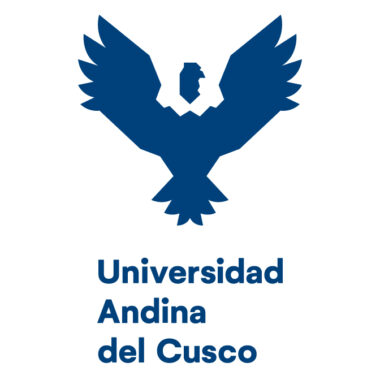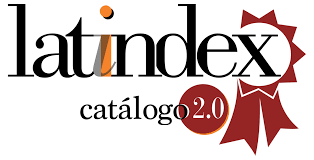Demonstrations of violence in students of the Universidad Autónoma Indígena de México
DOI:
https://doi.org/10.36881/yachay.v12i1.669Keywords:
direct, structural violence, cultural violenceAbstract
The manifestations of violence are attitudes that are immersed in all the contexts in which living beings coexist. These have been present throughout human history; therefore, experts have proposed various ways and methods to stop it, however, the escalation of violence in all its manifestations has reached unusual levels. In this sense, university contexts are not immune to this phenomenon, therefore, the objective of this research is to describe the various forms of violence that exist in the Universidad Autónoma Indígena de México (UAIM), located in the State of Sinaloa, Mexico. 167 sixth semester students and 4 teachers from the Mochicahui Unit participated in the research. The methodology applied has a mixed approach; The results were achieved by applying a survey to students and conducting interviews with the coordinators of the educational programs. It was found that 76% of the students surveyed report that the main form of violence is verbal, considered as direct violence; to a lesser extent, forms of cultural violence due to discrimination and perceived structural violence due to abuse of authority by teachers were found. Given this, it is urgent to stimulate actions to solve the problem of violence suffered by millions of citizens of the world. The bet of government agencies and civil society is in education for the development of skills in conflict management, violence prevention and to learn to build spaces of peace.
Downloads
References
Adams, D. (2014). Cultura de paz: una utopía posible. Herder.
Barbeito, C. y Caireta, M. (2010). Juegos de paz. Caja de herramientas para educar hacia una cultura de paz. La Catarata.
Batanaz, L. (2007). “Perspectiva general sobre interculturalidad y educación”, en Álvarez, J.L. y Batanaz, L. (Eds). Educación Intercultural e Inmigración, de la teoría a la práctica. (339-350). Biblioteca Nueva.
Calderón C. (2009). Teoría de conflictos de Johan Galtung. Revista de paz y conflictos, (2), 60-81. https://doi.org/10.30827/revpaz.v2i0.432
Cascón, F. (2006). Seminario de Educación para la Paz (APDH). Apuntes sobre educar en y para el conflicto y la convivencia. http://pacoc.pangea.org/documentos/_andalucia_educativa_paco.pdf
Conde-Vélez, S. y Delgado-García, M. (2020). Percepciones del alumnado sobre diferentes tipos de violencia. Adaptación y validación del CUVE3-ESO al contexto Universitario. Revista de Investigación Educativa, 38(2), 567-581. http://dx.doi.org/10.6018/rie.364431
Couceiro, E. (Coord.) (2018). Relatoría II Foro Mundial sobre Violencias Urbanas y Educación para la Convivencia y la Paz. Madrid, Asociación Española de Investigación para la Paz. https://aipaz.org/wp-content/uploads/2019/06/Relatoria-II-Foro.pdf
De Fleur, M.H. (2005). Fundamentos de comunicación humana. McGraw Hill.
Fisas, V. (1998). La Cultura de Paz. Capítulo XI del libro Cultura de paz y Gestión de conflictos. Icara/Unesco.
Fisher, S. (ed.), (2000). Trabajando con el conflicto: Habilidades y Estrategias para la Acción. Centro de Estudios para el Desarrollo y la Democracia (CEPADE) y el Consejo de Investigaciones para el Desarrollo de Centroamérica (CIDECA).
Galtung, J. (1990). Cultura y violencia. Journal of peace research. Vol. 27. No. 3. https://www.galtung-institut.de/wp-content/uploads/2015/12/Cultural-Violence-Galtung.pdf
Galtung, J. (1995). Investigaciones teóricas. Sociedad y cultura contemporáneas. Madrid: Tecnos.
Galtung, J. (1998). Tras la violencia, 3R: reconstrucción, reconciliación, resolución. Bakeaz y Gernika Gogoratuz.
Galtung, J. (2003). Violencia cultural. Documento de trabajo de Gernika Gogoratuz No. 14. Cultura profunda y cultura del conflicto.
Guerrero, G. (2017). Categorización de los conflictos y las violencias escolares, como elementos en el diseño de Espacios de Paz. [Tesis de doctorado]. Universidad Autónoma Indígena de México. https://www.researchgate.net/profile/Diana-Guerrero-Arce-2/publication/328778921_Categorizacion_de_conflictos_y_violencias_como_elementos_en_el_diseno_de_un_Espacio_de_Paz/links/5be2318692851c6b27ac1f5e/Categorizacion-de-conflictos-y-violencias-como-elementos-en-el-diseno-de-un-Espacio-de-Paz.pdf
Gutiérrez, Á. (2019). Aproximación al estudio de los tipos de violencia escolar percibidos por el alumnado universitario. Revista de psicología y ciencias del comportamiento de la Unidad Académica de Ciencias Jurídicas y Sociales, 10(1), 104-115. https://www.scielo.org.mx/scielo.php?pid=S2007-18332019000100104&script=sci_arttext
Lederach, J. P. (2009). El pequeño libro de Transformación de Conflictos. Good Books.
Ley General de Educación Superior (2021). Diario Oficial de la Federación. DOF: 20/04/2021. DECRETO por el que se expide la Ley General de Educación Superior y se abroga la Ley para la Coordinación de la Educación Superior. https://www.dof.gob.mx/nota_detalle.php?codigo=5616253&fecha=20/04/2021#gsc.tab=0
Martín, J. M. (2004). Qué es la violencia. En Molina, B. y Muñoz, F.A. (eds.). (2004). Manual de Paz y Conflictos. Eirene.
Martínez, V. (2000). Saber hacer las paces. Epistemología de los estudios para la paz. Convergencia, 7 (23). https://convergencia.uaemex.mx/article/view/1814
Martínez, V. (2008). El papel de la sociedad civil en la construcción de la paz: Un estudio introductorio. Icaria.
Merino, J. V. (2006). La violencia escolar: análisis y propuestas de intervención socio-educativa. Arrayán.
Mesa, M. (2008). Sociedad civil y construcción de la paz: Una agenda inconclusa. www.gloobal.net/iepala/gloobal/fichas/ficha.php?entidad=Textos&id=6606&opcion=documento
Plan Nacional de Paz y Seguridad (2018-2024). https://lopezobrador.org.mx/wp-content/uploads/2018/11/Plan-Nacional-de-Paz-y-Seguridad_.pdf
Prieto, M. T., Carrillo, J. C. y López, L. A. (2015). Violencia virtual y acoso escolar entre estudiantes universitarios: el lado oscuro de las redes sociales. Innovación educativa 15(68), 33-47. https://www.scielo.org.mx/pdf/ie/v15n68/v15n68a4.pdf
Ramos-Rodríguez, I., y Aranda-Beltrán, C. (2020). Violencia y acoso escolar: diferencias por sexo y edad en estudiantes universitarios mexicanos. CIENCIA UNEMI, 13(34), 84-93. https://ojs.unemi.edu.ec/index.php/cienciaunemi/article/view/1122
Sánchez-Olvera, A. R., Güereca-Torres, R., Vélez-Bautista, G. y Luna-Martínez, A. (2015). Estudiantes universitarios y violencia en el salón de clase. G. Vélez-Bautista y A. Luna-Martínez (coords.). Violencia de género. Escenarios y quehaceres pendientes, 17-44. https://www.researchgate.net/profile/Ma-Guadalupe-Velez-Bautista/publication/314879425_VIOLENCIA_DE_GENERO_ESCENARIOS_Y_QUEHACERES_PENDIENTES/links/58c6ee704585150ab420dbe7/VIOLENCIA-DE-GENERO-ESCENARIOS-Y-QUEHACERES-PENDIENTES.pdf#page=17
Sandoval, E. A. (2016). Educación para la paz Integral. ARFO.
Sandoval, E. A. (2018). Etnografía e investigación acción intercultural para los conflictos y la paz. Metodologías Descolonizadoras. Alfonso Arena.
Sky, M. (1997). Sexos en guerra. Gaia.
Universidad Autónoma Indígena de México (UAIM). (2001). Mochicahui. Nuevas fronteras. Gobierno del Estado de Sinaloa. Comisión para la atención de las comunidades indígenas de Sinaloa.
Downloads
Published
How to Cite
Issue
Section
License
Copyright (c) 2023 María del Rosario Romero Castro

This work is licensed under a Creative Commons Attribution 4.0 International License.
You are free to:
- Share — copy and redistribute the material in any medium or format
- Adapt — remix, transform, and build upon the material
- The licensor cannot revoke these freedoms as long as you follow the license terms.
Under the following terms:
-
Attribution — You must give appropriate credit, provide a link to the license, and indicate if changes were made. You may do so in any reasonable manner, but not in any way that suggests the licensor endorses you or your use.













